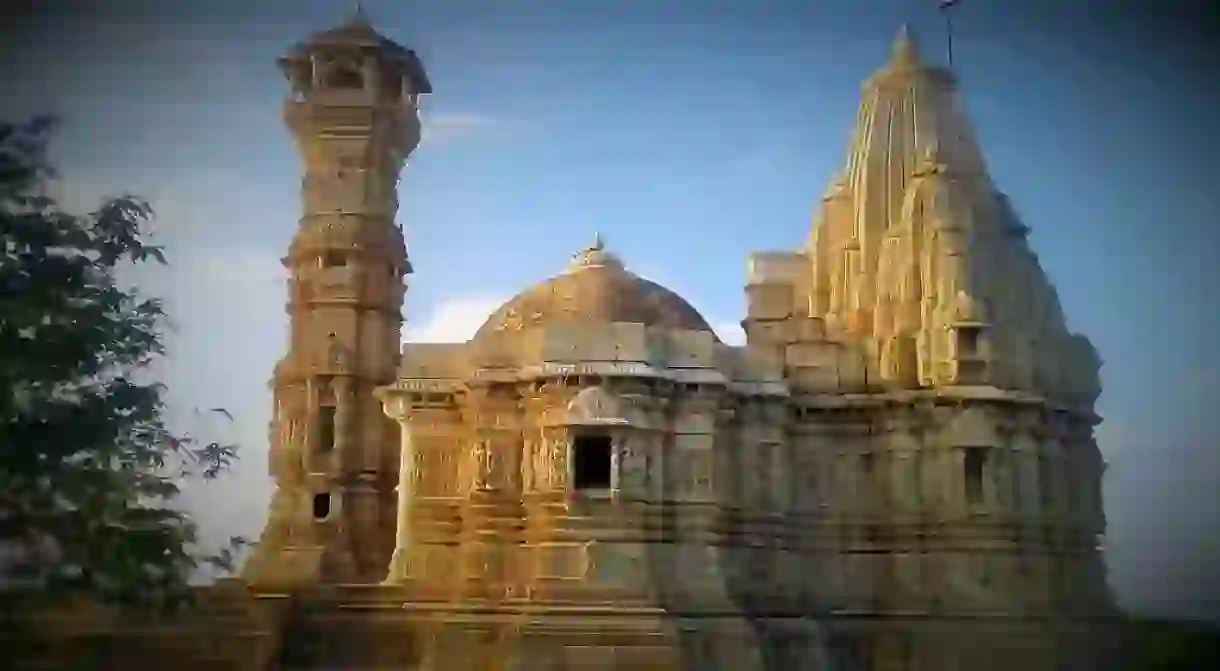The Best Places to Visit in Chittorgarh, Rajasthan

On the banks of the Berach river lies the quaint city of Chittorgarh that served as a capital of the Kingdom of Mewar from the 7th century until the 16th century. Strewn with royal historical sites that have survived the passage of time, this medieval town packs tales of love, gallantry and sacrifice into its every nook and corner. From an ancient fort to stunning palaces and temples, discover the best places to visit in Chittorgarh, Rajasthan.
Chittorgarh Fort
Building

Also referred as the ‘Water Fort’, it consists of 22 ponds and lakes, seven gates and several temples and palaces, some of which may lie in ruins, but worthy of a visit. You can catch the reflection of its ruins in the stunning waters.One of the noteworthy palaces within the Chittorgarh Fort is the Rana Kumbha Palace, which is the oldest palace of all – and it is also allegedly the most haunted palace in Rajasthan. It was here Rani Padmini (wife of Ratan Sen) along with many other women committed self-immolation to protect their honour from invading Sultan of Delhi, Alauddin Khalji, and their spirits are said to roam the premises. This palace may lie in ruins, but it continues to stun visitors with its ghost action and the spectacular series of canopied balconies.Other must-visit palaces include the Padmini’s Palace, which is a three-storey structure with dome-shaped pavilions atop the palace and water moat on all sides and the Fateh Prakash Mahal that stands out with its modern architecture and even houses a museum filled with murals, wall paintings, historical artefacts and sculptures.An unmissable spot and the most striking feature of the fort is its two memorial towers – 37.2-meters high Vijay Stambha (tower of victory) and 22-meters high Kirti Stambha (tower of fame). Both the towers have intricate carvings and look especially mesmerising during the evening when illuminated. The Victory tower is a nine-storey tower decorated with Hindu deity sculptures, while the fame tower is a seven-storey tower adorned with the sculptures of several tirthankar of the Jain pantheon.Near the Vijay Stambha lies the Meerabai temple that impresses visitors with its Indo-Aryan architecture, the intricate artistic detailing and tales of true love. Dedicated and named after an avid devotee of Lord Krishna, Meerabai (or Meera), this temple stands as a testament to the utter love and devotion she had for the Lord.Another much-loved temple is the 15th century Kumbha Shyam Temple located close to the Meera temple. Dedicated to Varaha (an avatar of Lord Vishnu), the temple is especially notable for its pyramid-shaped roof and intricately detailed artwork on the walls.
Between the Padimini’s Palace and Vijay Stambha lies the 14th century Kali Mata Temple that is dedicated to Goddess Kali. To the west side of the fort is the Gaumukh Reservoir,which is also worth a look. It’s one of the most important water bodies in the fort, and considered to be a sacred site.Located near to the Fateh Prakash Palace is the Sathis Deori Temple,an imposing structure that houses about 27 Jain temples. Constructed in the 11th century, the temple’s carved and sculpted pillars and domes along with the spiritual vibe that permeates the air attracts architecture aficionados and spiritual seekers alike.
Bassi Wildlife Sanctuary
Natural Feature, Park
Located in the Chittorgarh district near Bassi is the Bassi Wildlife Sanctuary that is home to a variety of animal species and migratory birds, along with diverse flora. Antelope, panther, wild cats, mangoose, blue bull, civet, hyena, crane, wild boar and langur are just some of the animal and bird species visitors will see in this sanctuary – a nature lover’s dream come true. Also, trees like Dhok and Saral can be seen here. It must be noted that tourists need to get permission from the Chittorgarh’s District Forest Officer to visit the sanctuary as it is a protected area.
Nagari
Building
Located 11 miles north of Chittorgarh lies the ancient village of Nagari that was once the major kingdom of Mauryan clan. Though there isn’t much to explore here, for those interested in knowing the rich and diverse history of the royal state, Nagari is a must-visit. Several old gold coins, a stupa adorned with terracotta tiles and other relics have been discovered here that depict the story of the bygone era.













